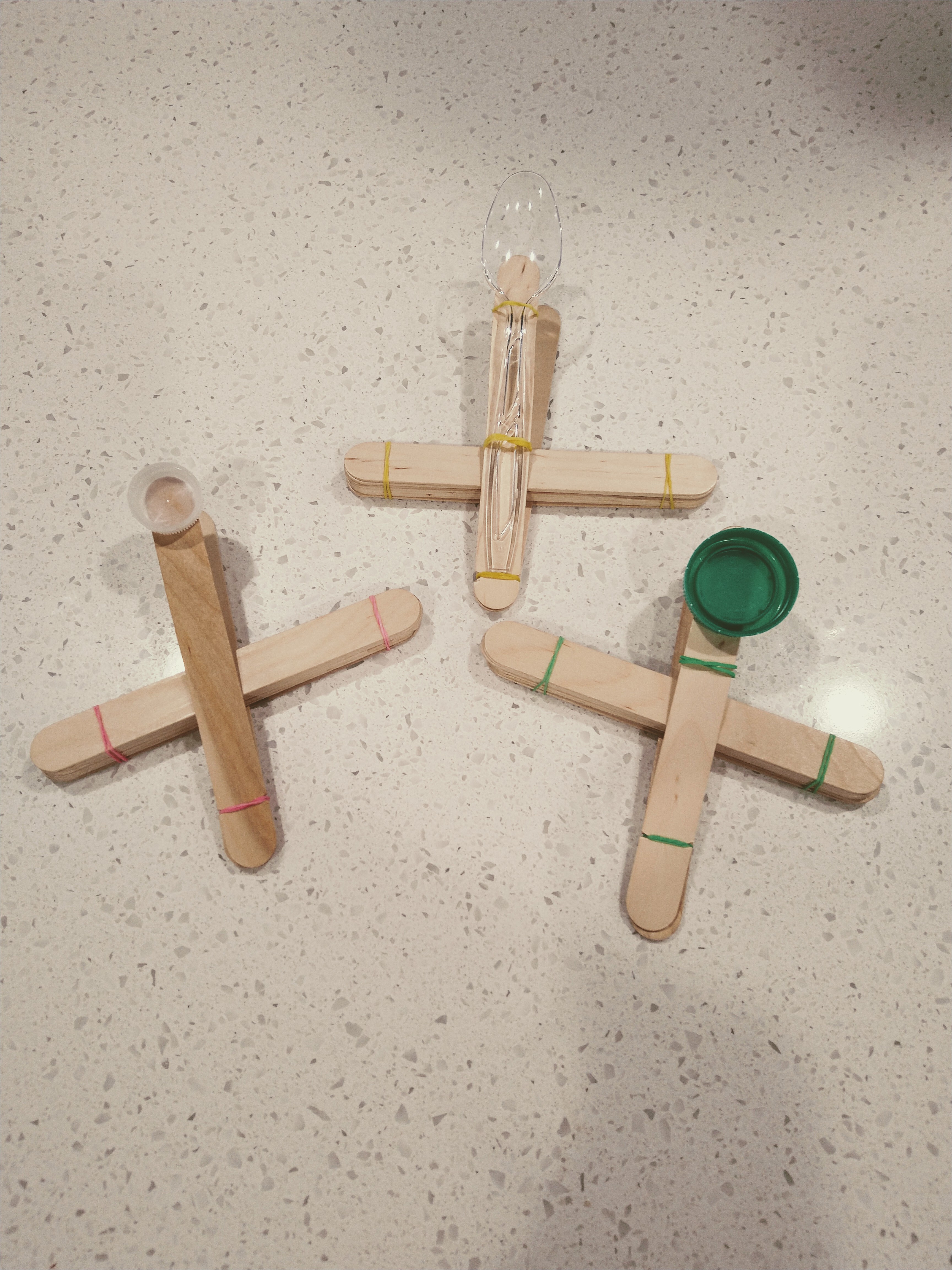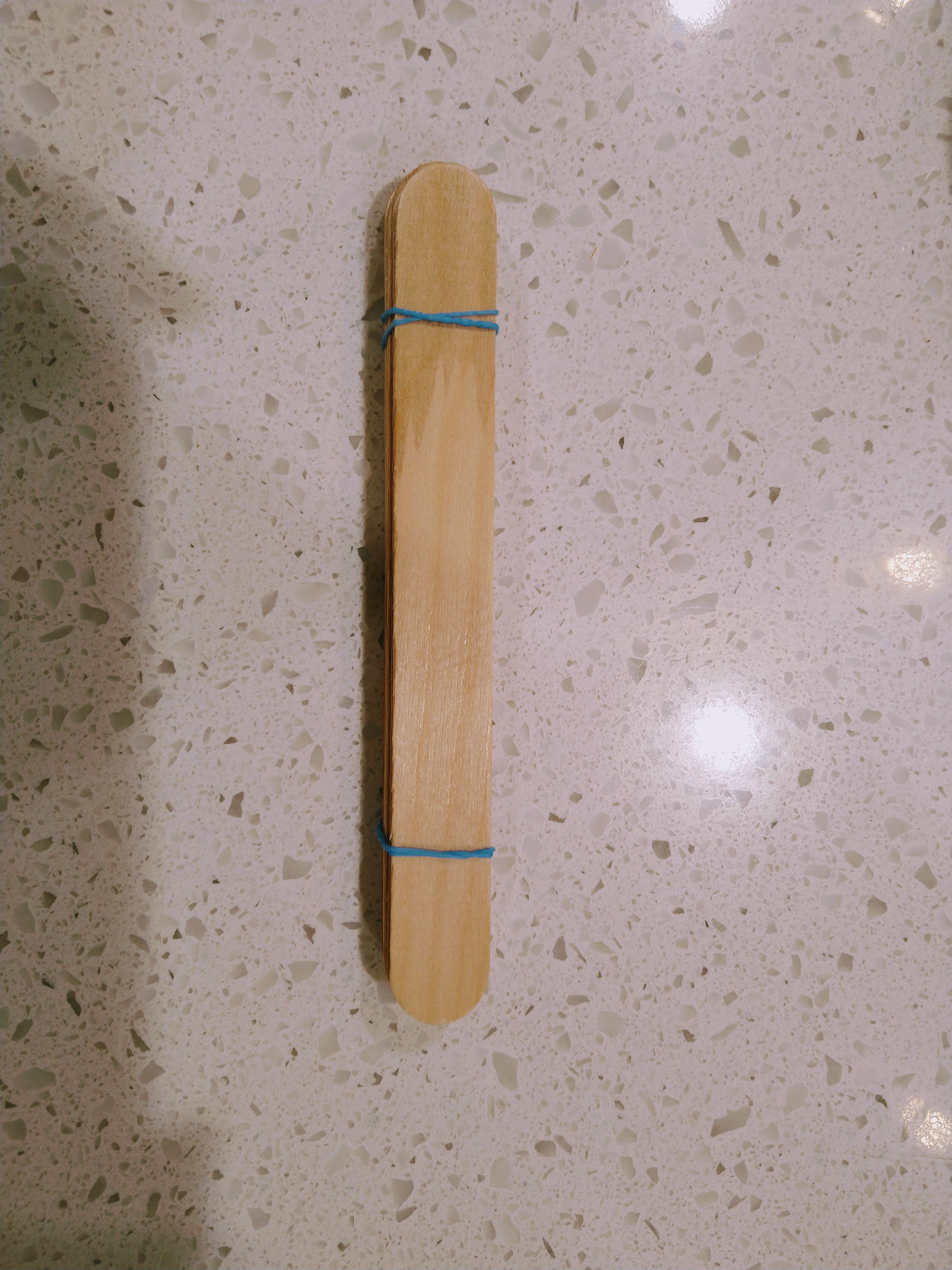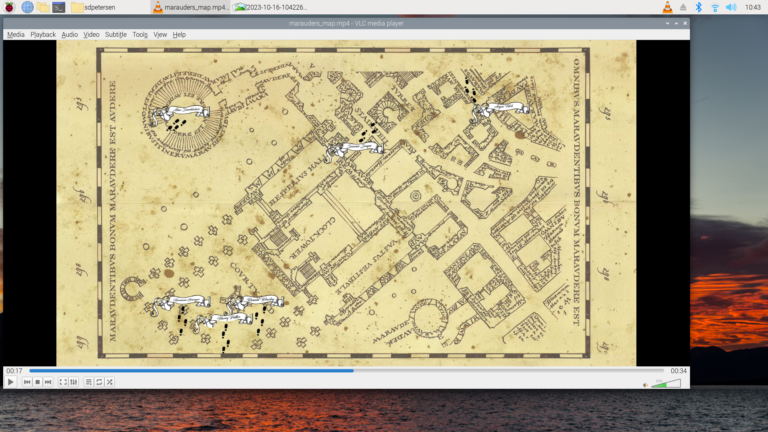Popsicle Stick Catapult


Popsicle Stick Catapult was a super fun activity. The boys enjoyed the process of making the catapult, and let’s be honest, what kid doesn’t love shooting little objects all over the house. LOL! We started out making predictions about which object would fly the furthest. Then we got to work making the catapult. This is a great activity to teach the engineering process. There are multiple ways that you can make and tweak the popsicle stick catapult. They will all change the results slightly. We made the original catapult (described below) then we made slight variations and tested how it changed the results. This lead to a great discussion on potential energy. Our 10 and 12 year old got very into the engineering process and really started to understand the science behind why it works. The 6 and 3 year old had fun launching objects.
Popsicle Stick Catapult Lesson Plan
Objective:
To use the engineering process to understand the difference between kinetic and potential energy.
Materials:
- 10 Jumbo popsicle sticks
- Rubber bands
- Bottle lid (soda pop or milk caps work great)
- Plastic spoon (you can use this instead of a bottle lid)
- Double sided tape, sticky dots or something similar
- Items to shoot (marshmallows, pompoms, small candy etc.)

Understanding the Science behind Popsicle Stick Catapults
Vocabulary:
- Kinetic Energy- Energy that an object has from being in motion.
- Examples of kinetic energy- running, walking, a car driving, a ball rolling down a hill.
- Potential Energy- Energy that is “stored” because of the position and/or arrangement of the object.
- Examples of potential energy: water behind a dam, a child at the top of a slide, water at the top of a waterfall, a raised weight.
- Force- push or pull on an object that causes it to stop, change directions or start moving.
- Fulcrum- the point on which a lever rests or is supported.
- The Engineering Process- preforming a series of steps in order to solve a problem.
Newtons Law of Motion
Newtons first law of motion states that a body at rest will remain at rest, and a body in motion will remain in motion unless it is acted upon by an external force.
We will be testing this law through this activity. This law simply means that an object cannot stop, start or change its motion on its own. It takes force to change the motion.
The children will experiment with this law by exerting force when the want to launch an object.
Popsicle Stick Catapult Lesson Discussion
Discuss the vocabulary with the students.
Discuss the difference between kinetic and potential energy. Go over examples of each kind of energy. Show an example of a ball rolling across the table. Stop the ball and discuss how force, kinetic and potential energy are acting together.
Have the students share examples of different kinds of potential energy, kinetic energy and talk about the different kinds of force that may effect it.
Once they understand these principles move on to making the catapult.
Show them the three different items that you have picked to shoot (we did marshmallows, pompoms and a small candy.)
Have them write down their predictions.
Which object will shoot the furthest? Why?
Making the Popsicle Stick Catapult
Step 1
Draw a small line on each side of a jumbo stick about an inch from the top of the stick.

Step 2
Cut a notch (a small triangle) where you had made the marks.


Do this for TWO popsicle sticks.
Step 3
Gather the other 8 sticks (that do not have a notch). Secure the rubber band around the top and bottom to make a bundle of sticks.

Step 4
Slide one of the notched sticks between the bottom two sticks.
Place the second stick on top of the bundle. Make sure the notched sections are next to each other.


Step 5
Place an elastic around the notched sticks to secure them together.

Step 6
Attach the bottle lid on. Use the sticky dots to attach the bottle lid.
Variation- you can attach the plastic spoon using rubber bands if you would prefer. We tried both methods.
In the end we preferred the spoon because we had more control over the force and could manipulate the energy easier.

Step 7
Launch you catapult. Have fun and launch items with your catapult.
We experimented with our prediction of which item went the furthest. After this we experimented with changing the fulcrum and the force and recording how it changed the results.
Let the students come up with several different experiments to find the best way to launch an item. This is a great opportunity to test out the engineering process.
We discovered how moving the spoon up verses down changed the force and the arc. We even discovered how to launch the marshmallows into the pendent lights!
Wrap Up/Conclusion
Have the children write down how the process changed as they experiemted.
What object shot the furthest?
If you changed the fulcrum, what happened to the items you shot?
What observations and discoveries did you make?
We hope this lesson plan helped you out! Check out our other fun lesson plans! Race to see who can build the tallest tower with our marshmallow tower lesson plan!








